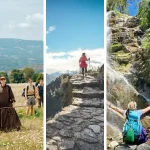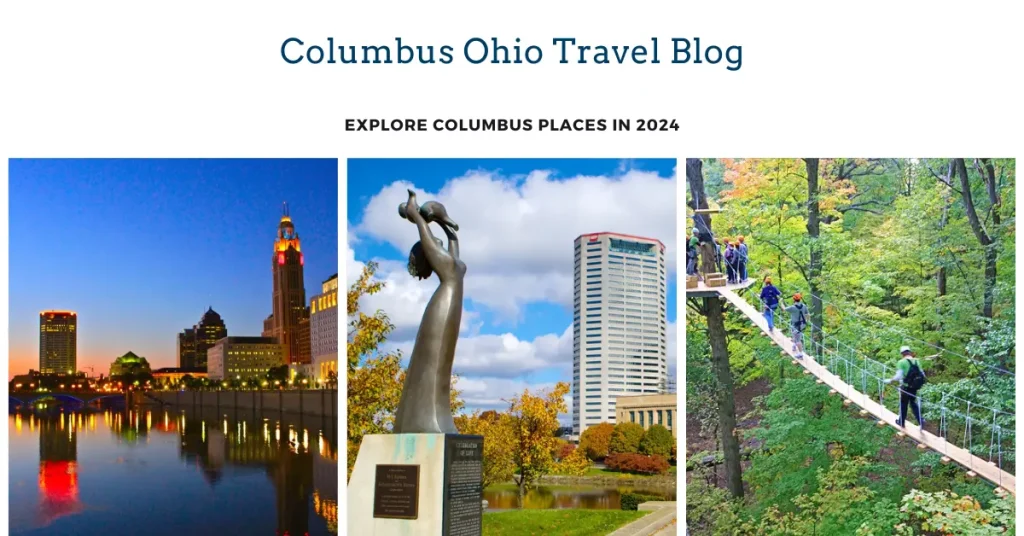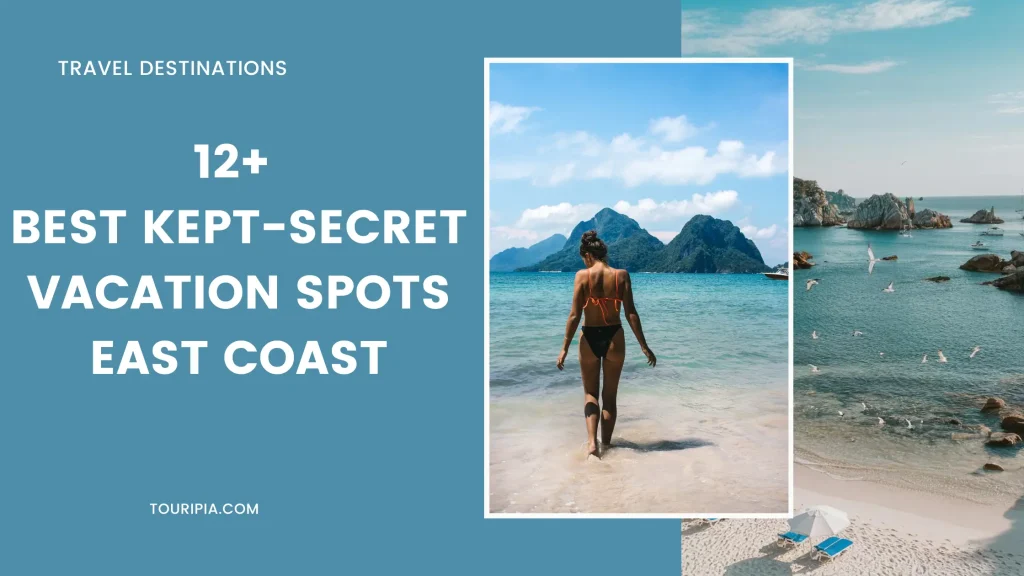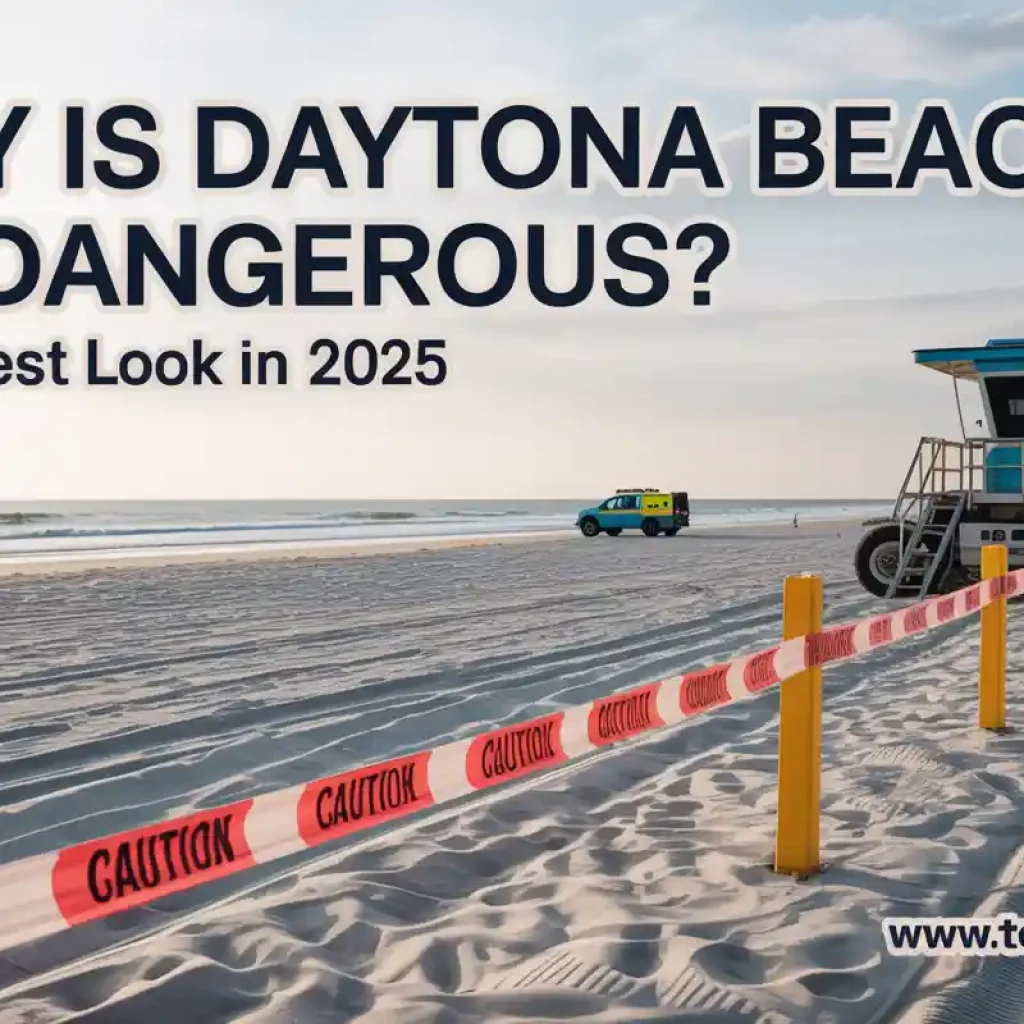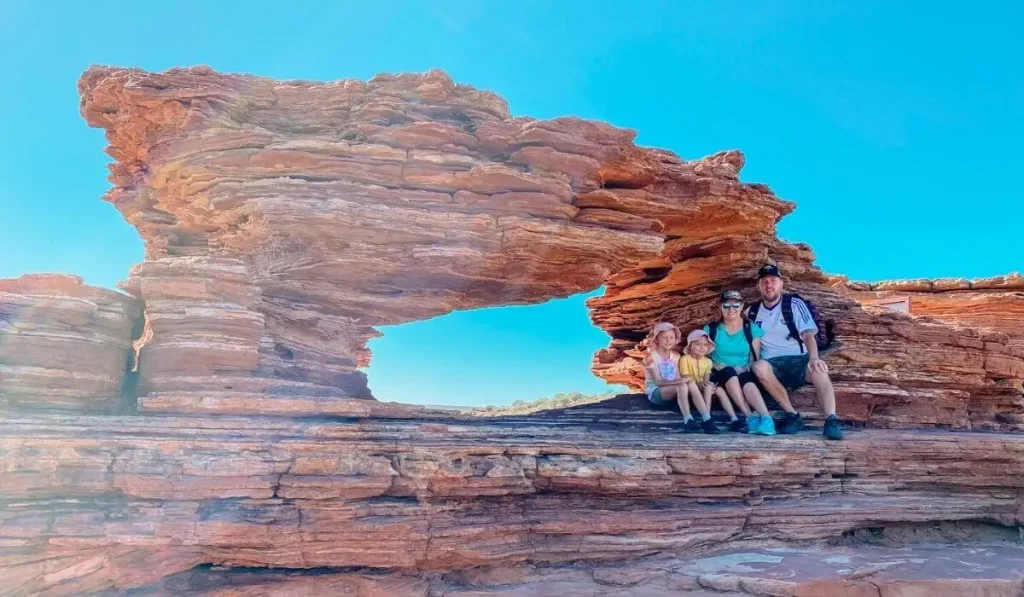Moll de la Fusta: The Ultimate Seaside Guide
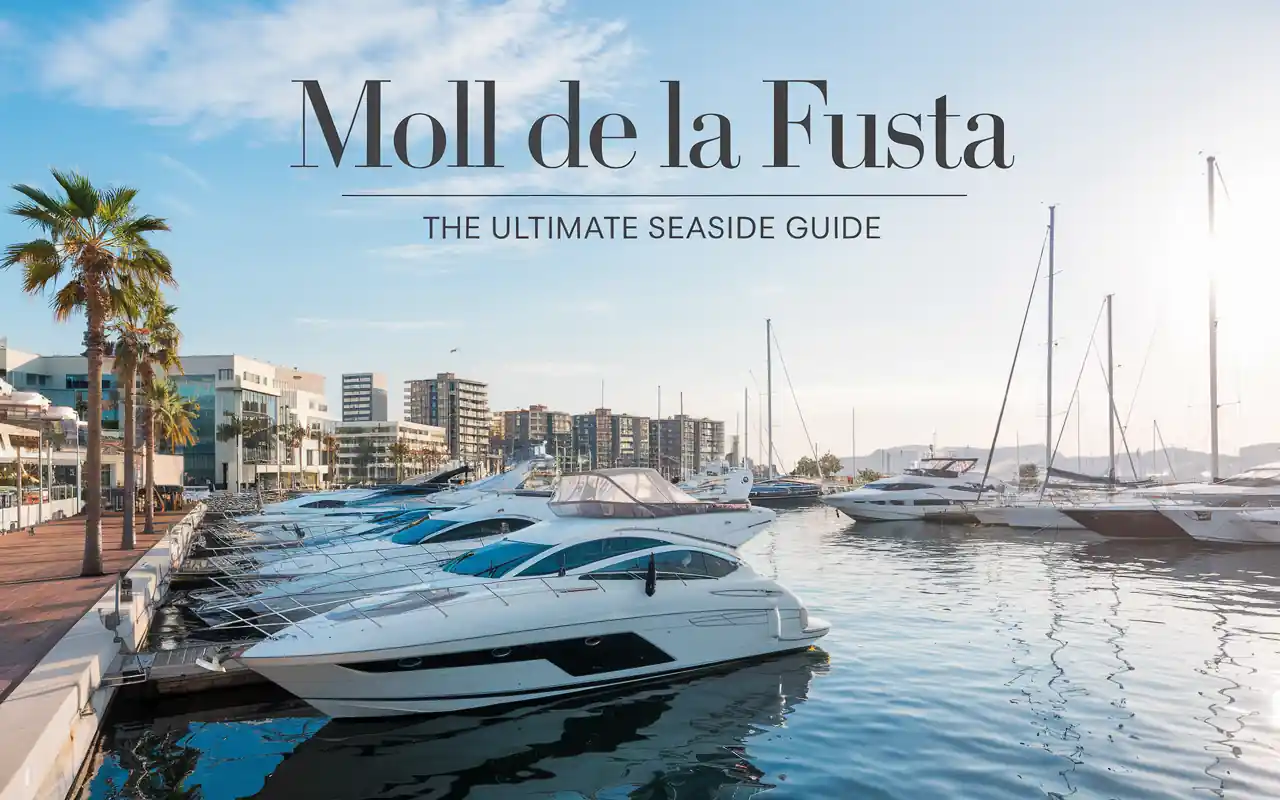
If you’ve ever wandered through Barcelona and felt the sudden urge to slow down, maybe breathe in the salt air or just watch boats drift by… there’s a spot that quietly steals hearts. Moll de la Fusta, a long promenade hugging the edge of Port Vell, isn’t trying to be flashy. And maybe that’s why it’s so easy to love.
It’s the kind of place you stumble upon while walking from La Rambla toward the sea, thinking you’ll take a quick detour… and then two hours go by. Locals skateboard past, couples stroll hand in hand, someone’s playing soft guitar by the benches. The sun bounces off the water. It’s not loud, but it lingers — like a mood that doesn’t want to end.
This ultimate seaside guide explores what makes Moll de la Fusta worth more than just a pass-through. From quirky art to harbor cruises, nearby tapas joints to early morning jogs, we’ll take you through it all.
Whether you’re visiting in the off-season or catching the festive Moll de la Fusta Navidad vibes, there’s something here for every kind of traveler. Even those who didn’t plan to stay long.
📍 What Is Moll de la Fusta & Where Is It Located?
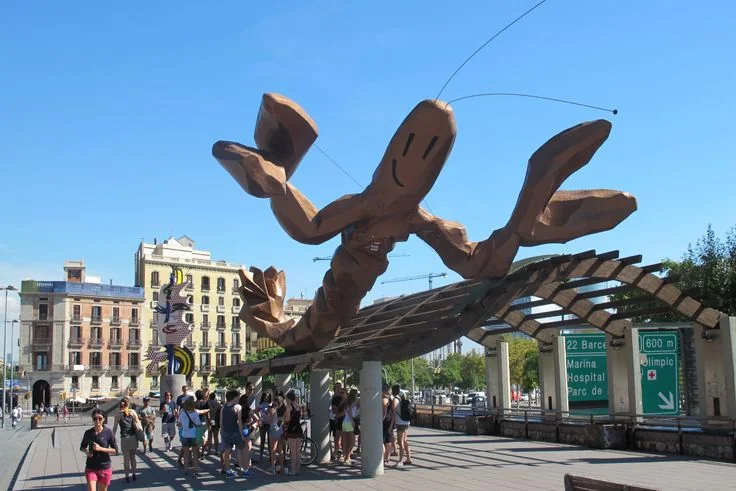
A Scenic Strip by the Sea
Once part of a working dock known as Moll de Bosch i Alsina, this stretch along the waterfront was transformed in the lead-up to the Barcelona Olympics.
It’s now a relaxed, open-air esplanade that connects the historical with the maritime — old port charm with clean, contemporary lines.
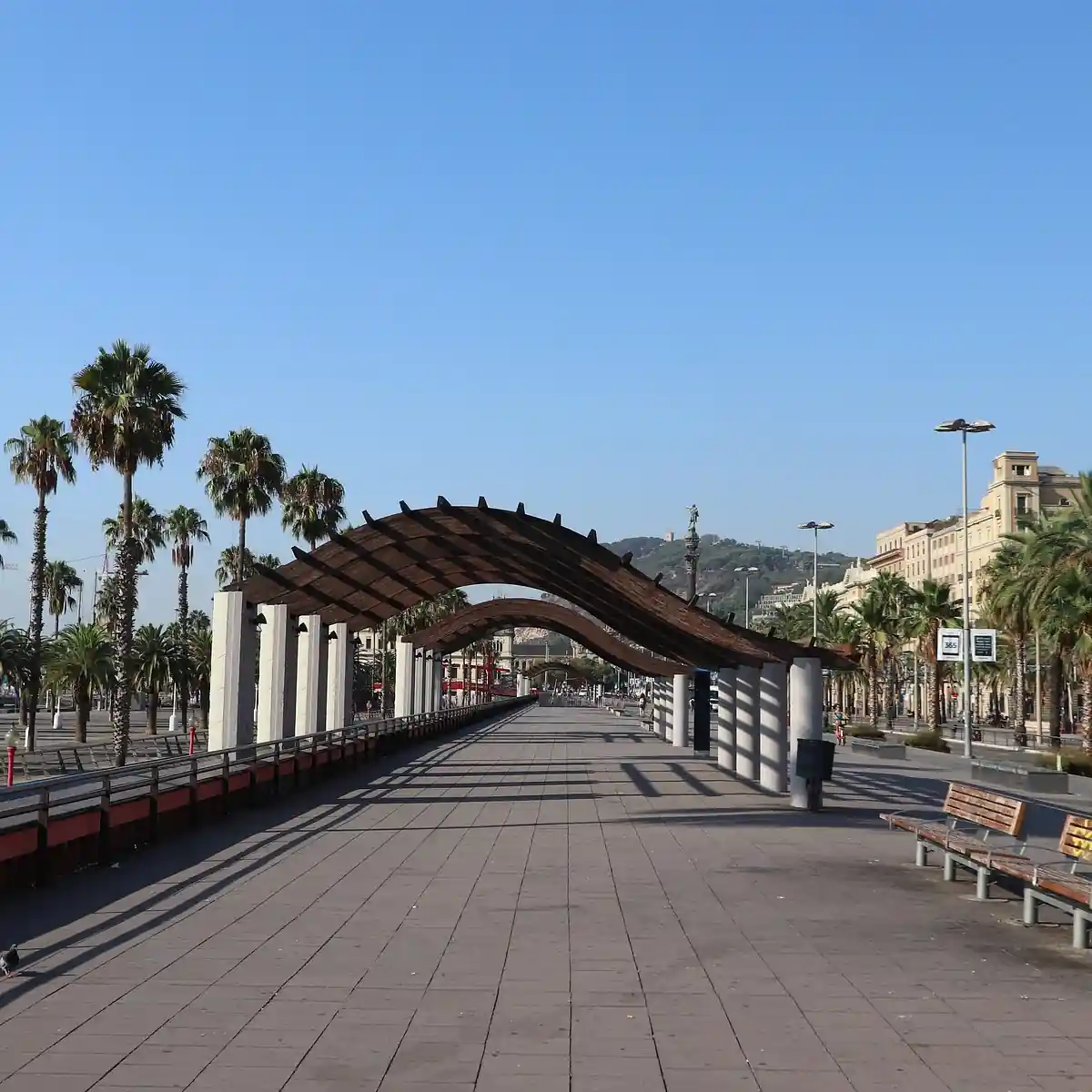
You’ll find it nestled between the Columbus Monument (Mirador de Colom) and Barceloneta. If you’re standing by the statue, just start walking toward the water… and you’re basically there.
The full stretch runs along Passeig de Colom, forming a scenic corridor between the Barri Gòtic and the harbor.
Here, old meets new. The wooden platforms and shaded benches feel peaceful, but glance up and you’ll spot Roy Lichtenstein’s wild and colorful El Cap de Barcelona sculpture — a reminder that this city never sits still for long.
Some call it El Moll de la Fusta, others still say Moll de Bosch i Alsina… and honestly, a few tourists have even mixed it up as moll de la fusty on reviews. But whatever the name, the vibe stays the same: breezy, walkable, and undeniably Barcelona.
How to Get There
You don’t need a car — and honestly, you probably shouldn’t bring one here. The whole point is to slow down.
- Metro: Take the L3 line to Drassanes or L4 to Barceloneta — both are within a short walk.
- Walk or bike: Coming from Las Ramblas, El Born, or the Gothic Quarter? It’s just 10–15 minutes on foot. Bike rentals are easy to find nearby too.
- Car: If you must, there’s paid parking at BSM Moll de la Fusta Car Park right along the promenade.
You could also approach from the water… literally. A few harbor tours dock nearby, and if you’re doing a Barcelona Sailing Day, this area is often the first bit of land you’ll step back onto.
🖼️ Art, History & Architecture at Moll de la Fusta
✔️ Public Art Installations & Sculptures
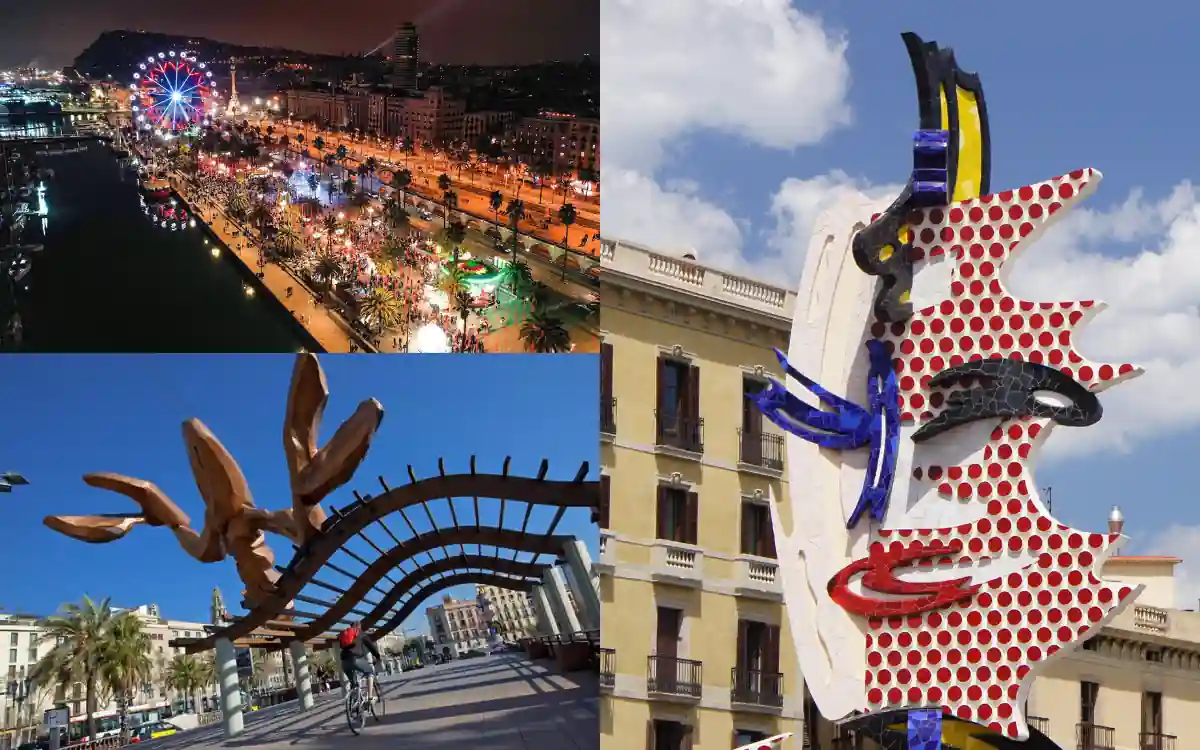
You can’t really walk Moll de la Fusta without noticing it — that giant pop-art face staring over the harbor like it knows something you don’t.
El Cap de Barcelona, created by Roy Lichtenstein for the 1992 Olympics, is impossible to miss. Playful, oversized, and a little strange… it feels perfectly at home here.
But that’s not the only creative stop. This part of the Ciutat Vella has a quiet reputation for being an open-air gallery. Every now and then, rotating exhibits appear — from giant inflatables during Moll de la Fusta Nadal to temporary pop-ups during the Saló Nàutic Internacional de Barcelona.
If you happen to visit in winter, the Moll de la Fusta Navidad market brings twinkling lights, artisanal stalls, and sometimes even live music right to the water’s edge.
You might also spot the Escultura al Moll De La Fusta, a quieter piece — less flashy, more contemplative — tucked between the palm trees and benches. It doesn’t ask for attention, which somehow makes it more interesting.
✔️ Modern Meets Maritime
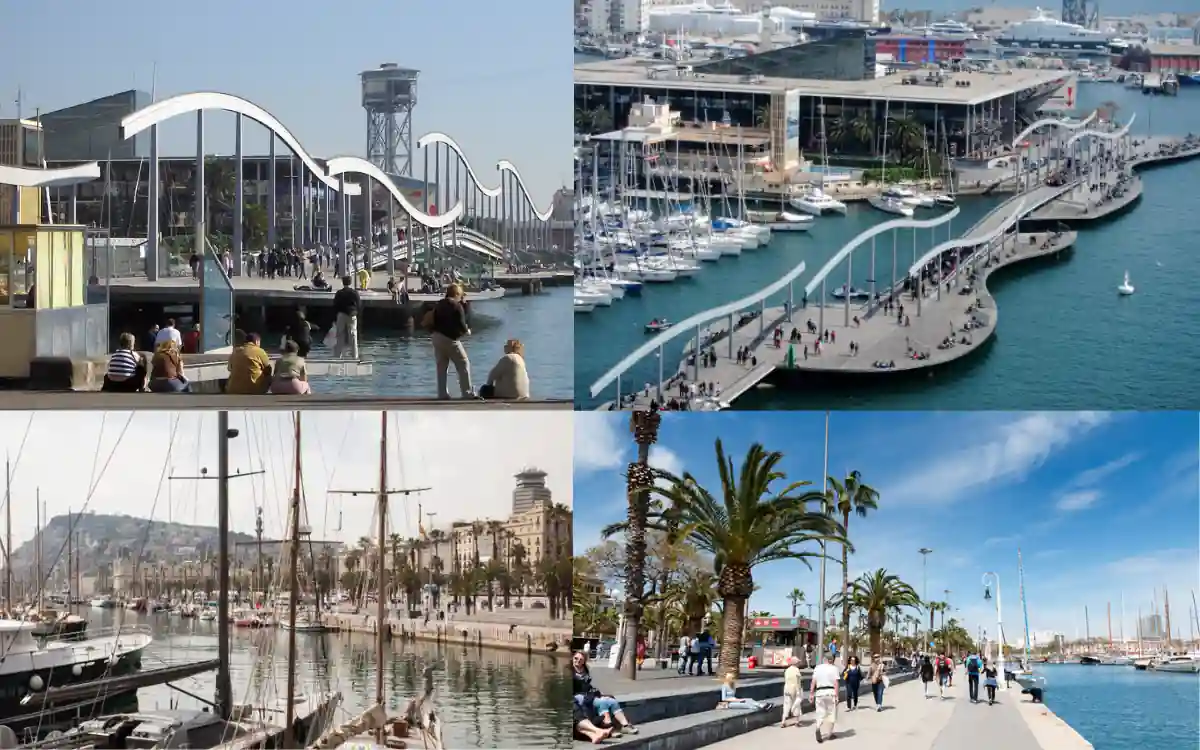
There’s something kind of surreal about the way sleek modernity blends into centuries-old port history here. What used to be a purely functional dock (as part of Moll de Bosch i Alsina) has morphed into this hybrid public space: part art walk, part urban chill zone.
You’re standing where cargo ships once unloaded. Now, the same space draws skaters, painters, dog walkers… and maybe someone just lying in the sun with a book.
The transformation of Port Vell — which includes Moll d’Espanya, Rambla de Mar, and El Moll de la Fusta — was a huge part of Barcelona’s late-20th-century urban revival. It’s not just beautiful… it’s symbolic of how the city embraced the sea again.
So even if you’re not chasing architecture or sculpture shots, just walking through this area offers an unspoken narrative — old Barcelona meeting new.
🚶 Things to Do at Moll de la Fusta
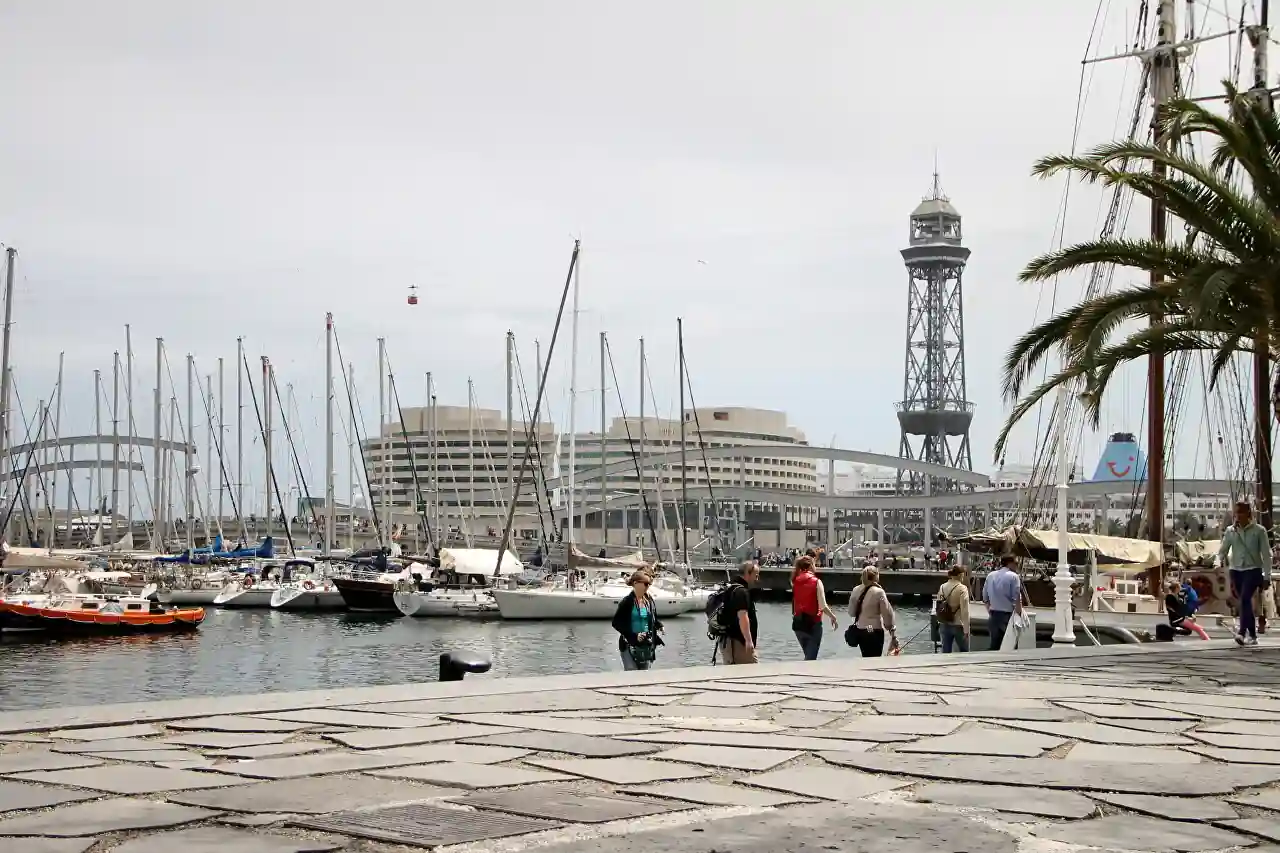
✔️ Stroll Along the Seafront Promenade
This isn’t the kind of place that demands an itinerary. You walk, you sit, you pause to take in the sailboats… that’s the whole point.
But if you like having a reason to explore:
- Couples might want to come around sunset, especially when the sky turns sherbet-pink over the harbor.
- Solo travelers? This is one of the easiest places to just be — no need to look busy, no pressure.
- Photographers will love the mix of textures: shiny marina waters, weathered wood decking, bold art, palm shadows… there’s always something to frame.
At times, it feels like an unofficial stage. Street musicians set up with soft jazz or flamenco. Kids race each other on scooters. Someone’s doing yoga near the benches. It’s laid-back, but full of little moments.
✔️ Visit Nearby Attractions
You don’t have to walk far to stumble into something unexpected:
- Museu Marítim de Barcelona sits nearby, tucked inside the old shipyards (Drassanes Reials). Honestly, it’s bigger than it looks and offers some fascinating insights into seafaring life, Barcelona’s maritime history, and even a full-size replica of a 16th-century galley.
- The Columbus Monument (Mirador de Colom) is just around the corner — a good landmark if you’re a bit lost. You can go up the elevator inside for a panoramic view, though it’s tight… and not for the claustrophobic.
- Just across the water via the Rambla de Mar footbridge is Maremagnum Shopping Center. A bit commercial, sure, but there are good views from the terraces, and it’s a useful spot if you need restrooms, shade, or last-minute souvenirs.
Oh, and if you’re in town during a special sailing event like Barcelona Sailing Experience or the Barcelona Classic Gala, keep your eyes on the harbor — you might catch an old-school regatta or sleek race boats lining up just off the promenade.
✔️ Take a Port Vell Harbor Tour
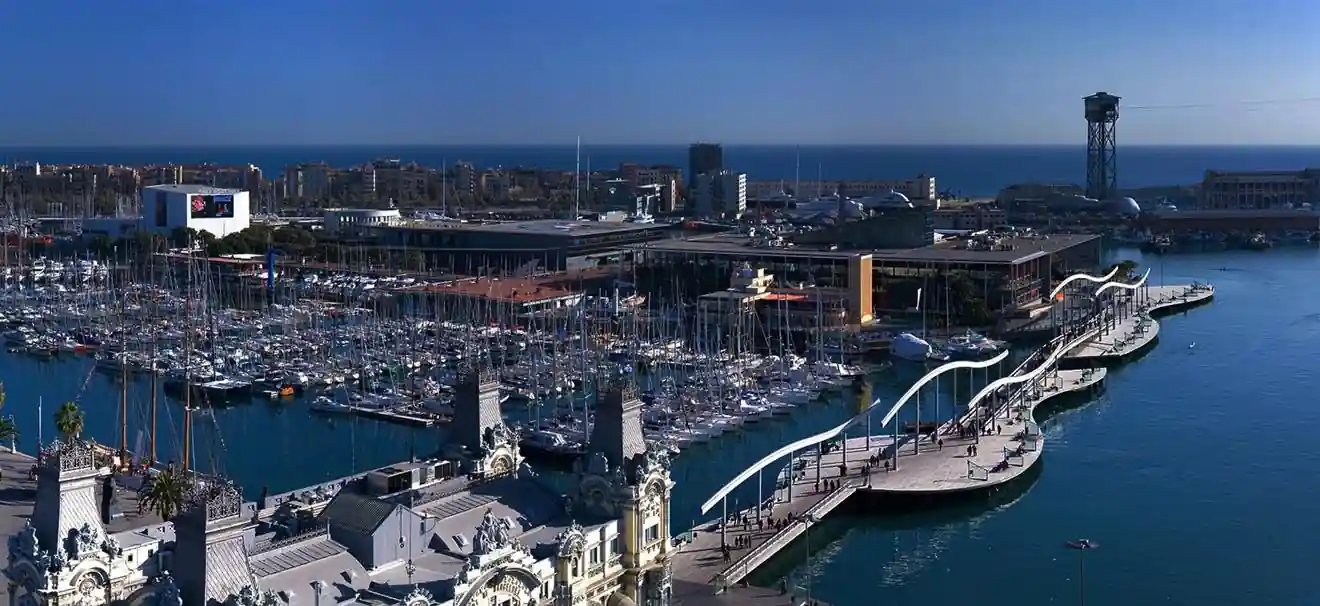
Sometimes… you want to get off land.
Near the Moll, you’ll find kiosks offering Golondrinas harbor cruises. These aren’t fancy yachts — more like breezy, open-air sightseeing boats. They loop around Port Olímpic, the docks, and give you a slow-motion view of the skyline. It’s one of those low-effort, high-payoff ways to see Barcelona from a different angle.
Pro tip? Early morning rides tend to be quieter, and the light is amazing for photos. Midday can get crowded, especially on weekends.
☕ Where to Eat & Drink
✔️ Best Cafés and Tapas Bars
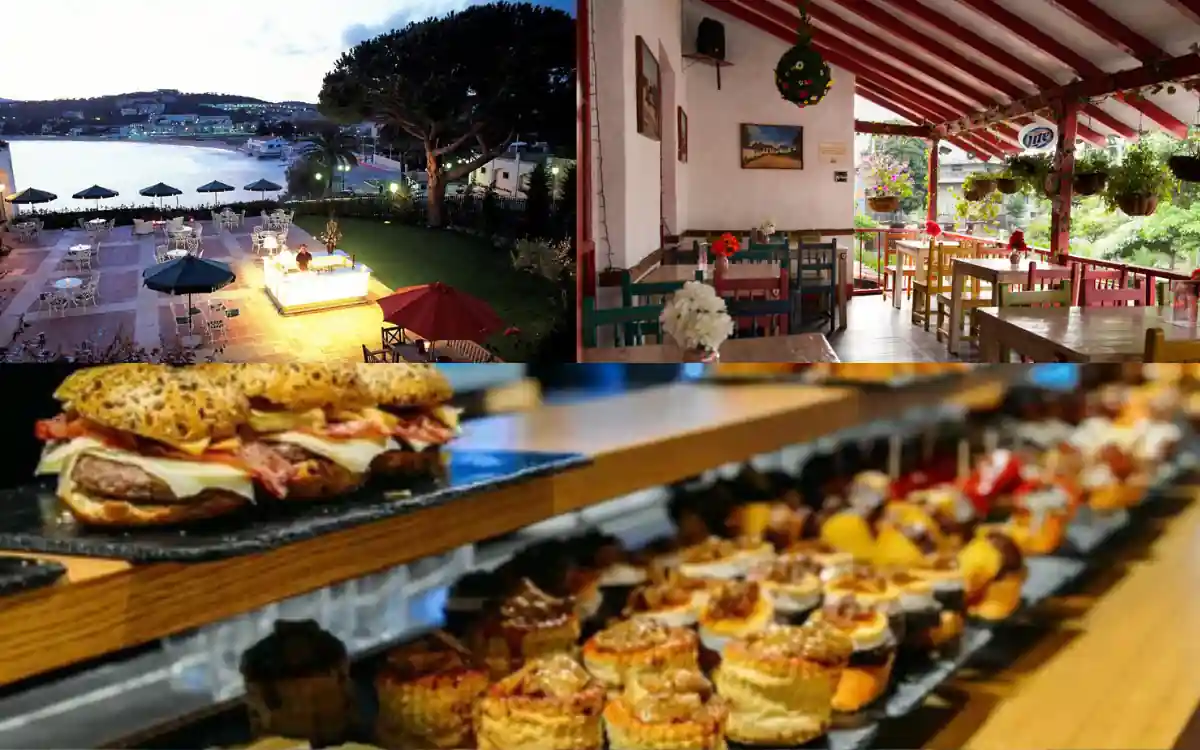
Finding something delicious near Moll de la Fusta isn’t exactly a challenge. What is tricky… is deciding where to start. Whether you want a long, lazy seafood lunch or just a quick bite before heading toward La Rambla, here are some easy wins:
- La Gavina (at Port Vell) offers one of the better marina views. Think classic Catalan seafood, white tablecloths, and octopus that practically melts. Pricey? A bit. But the view and salty breeze are worth the splurge if you’re in the mood to linger.
- Bar Leo, tucked near La Barceloneta, is pure personality. Flamenco photos plaster the walls, the beer’s cold, and if you’re lucky, someone will strum a guitar in the corner. It’s not tourist-polished… which is exactly the charm.
- La Fonda sits closer to the Passeig de Colom side. It’s a safer bet for traditional plates like paella or fideuà, especially if you want something filling before walking toward Maremagnum or Aquàrium Barcelona.
You could also slip down side streets in El Born or along Carrer la Rambla for quieter bites — little places with handwritten menus and tapas that don’t try too hard. A glass of vermut and pan con tomate is all you need sometimes.
✔️ Quick Bites & Takeaway Options
Not every visit needs a sit-down meal. Sometimes you’re in motion, a little sunburnt, maybe just craving sugar.
- Churro stalls sometimes pop up near the footbridge. Crispy, piping hot, and dusted in sugar… yes, please.
- Food trucks occasionally appear during events at Moll de la Fusta Navidad or Barcelona Classic Gala. These range from fusion paellas to vegan burgers, depending on the day.
- And don’t underestimate the local gelato spots along Passeig Marítim de la Barceloneta. Especially welcome after a long walk in the heat.
If you’ve parked at BSM Moll de la Fusta Car Park and just need something quick before heading to your next stop (maybe Hash Marihuana & Hemp Museum Barcelona?), there’s often a small café nearby doing decent takeaway sandwiches and coffee.
🚴 Outdoor Activities & Local Life
✔️ Bike & Skate-Friendly Zone
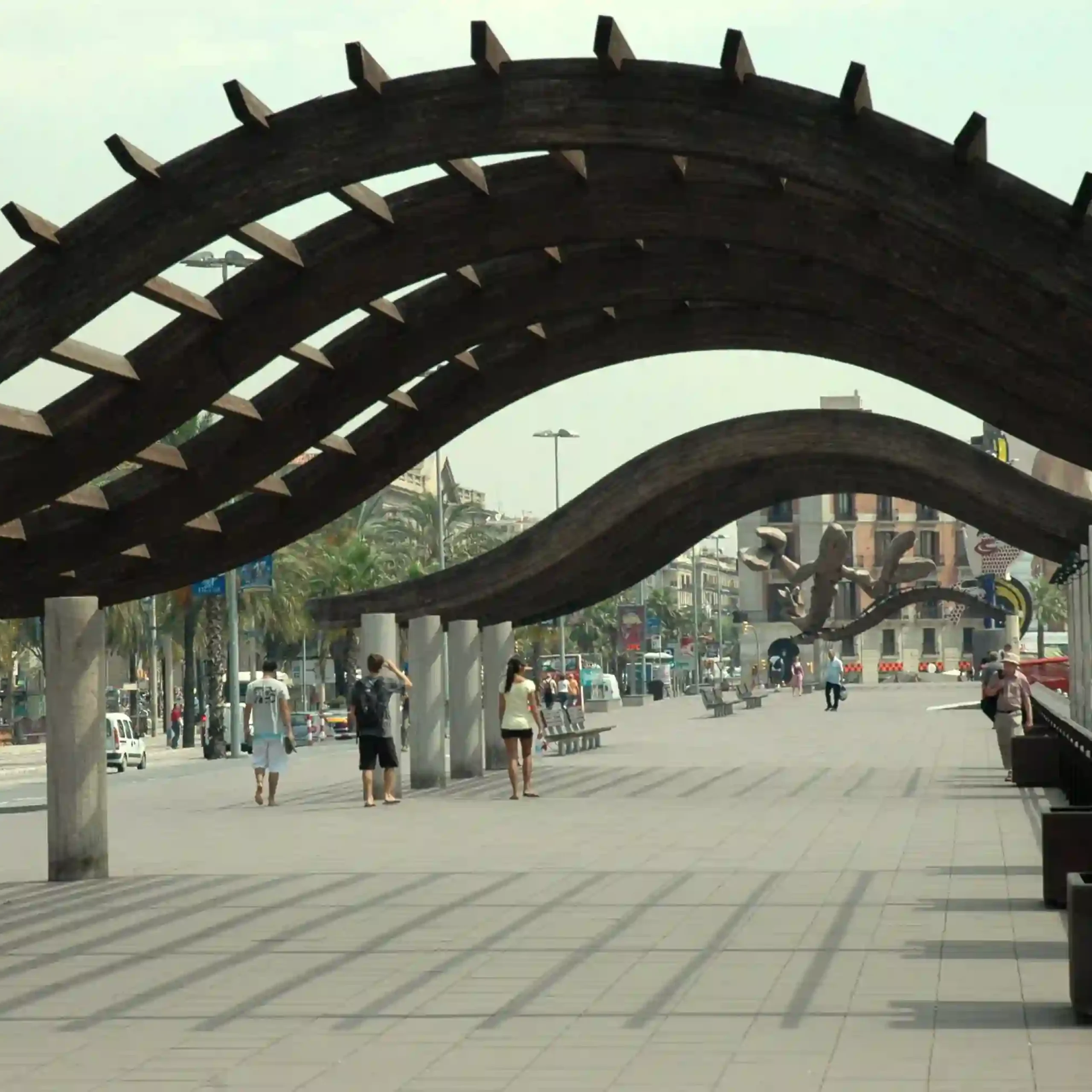
What makes Moll de la Fusta such a relaxed place is how open it feels. It’s not crowded with furniture or heavy landscaping… it just stretches. And that makes it perfect for wheels.
You’ll spot:
- Kids learning to skate
- Cyclists zipping past the palm trees
- Tourists on rented e-scooters trying not to look nervous
There are a few places nearby where you can rent a bike or scooter by the hour. The path connects smoothly to both Pg. Marítim de la Barceloneta and Passeig de Colom, so you can coast through some of the best seaside views without dodging traffic.
Just watch for the occasional selfie-taker. And don’t try to ride across Rambla de Mar… it’s too narrow and gets crowded fast.
✔️ Local Events & Markets
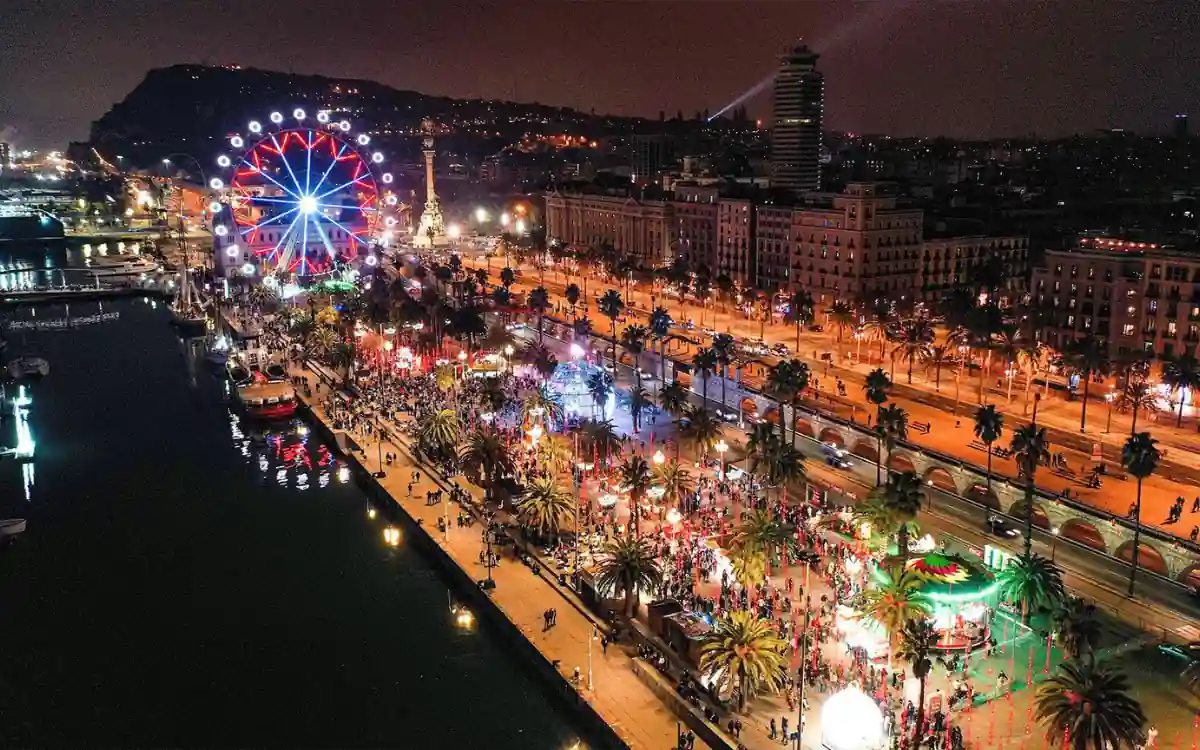
If you’re hoping to stumble into something local — like a pop-up market or an art fair — this is a good place to try.
While it’s not as constant as Arenas de Barcelona or the busier parts of Las Ramblas, Moll de la Fusta occasionally hosts:
- Vintage markets with vinyl, postcards, and handmade jewelry
- Food truck festivals (especially during holidays or summer weekends)
- Open-air concerts, sometimes linked to cultural events like Barcelona Olímpica or maritime-themed celebrations
One of the best times to visit might be during Moll de la Fusta Nadal. Everything’s strung with lights, local crafts line up under tents, and the scent of mulled wine mixes with grilled chorizo in the air. It feels a bit more relaxed than the bigger Christmas markets — less packed, but just as festive.
Even outside of special dates, you’ll see people gathering — artists sketching, students practicing guitar, older couples just… sitting and watching the boats.
🛥️ Nearby Attractions You Can’t Miss
One of the best parts of spending time at Moll de la Fusta is how close you are to… well, everything. You could easily make a full day out of this stretch of waterfront without ever straying too far.
✔️ Gothic Quarter (Barri Gòtic)
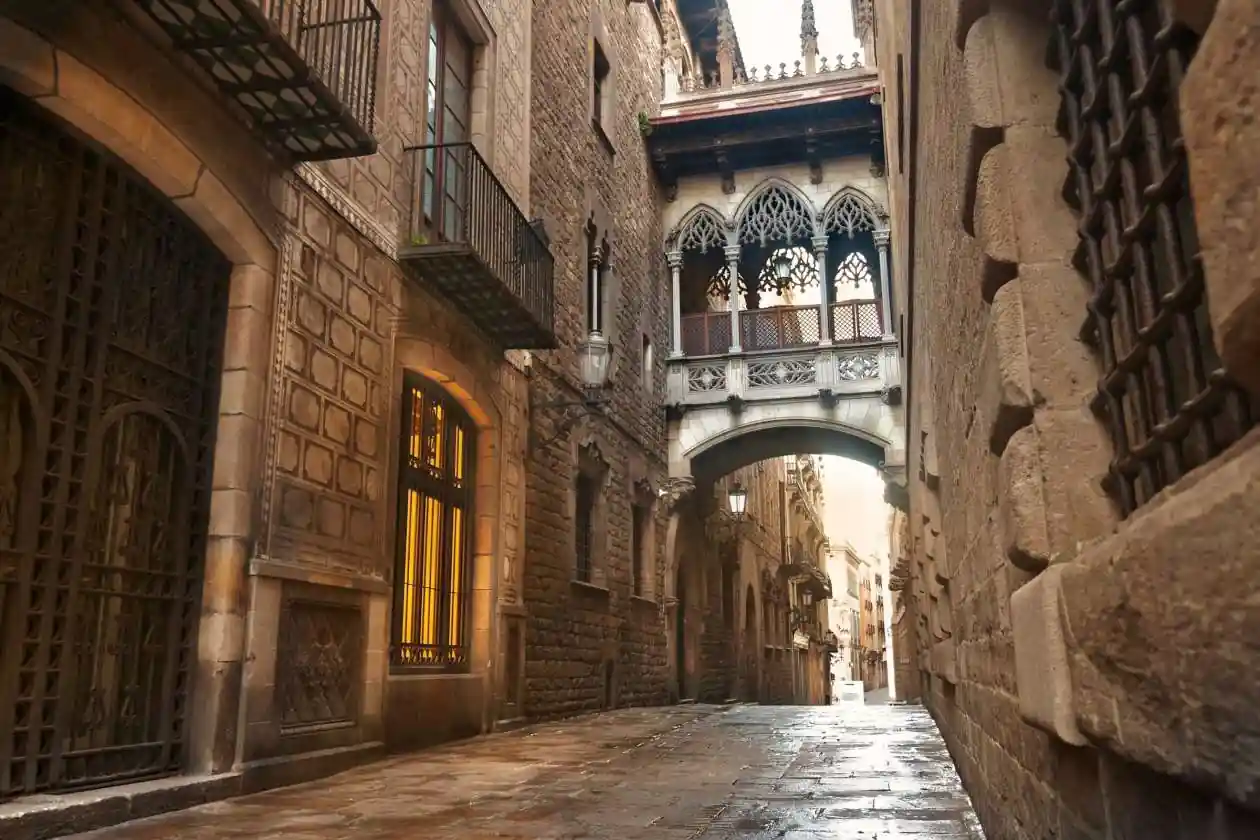
Just cross over to Passeig de Colom and duck into the narrow backstreets, and suddenly you’re in another world. Roman ruins, candlelit tapas bars, indie boutiques.
The Safestay Barcelona Gothic hostel sits right in the middle of it all, which is actually a pretty smart base if you’re on foot most of the time.
There’s something about wandering the Gothic Quarter in late afternoon light… it’s easy to lose track of time. (In a good way.)
✔️ Barceloneta Beach
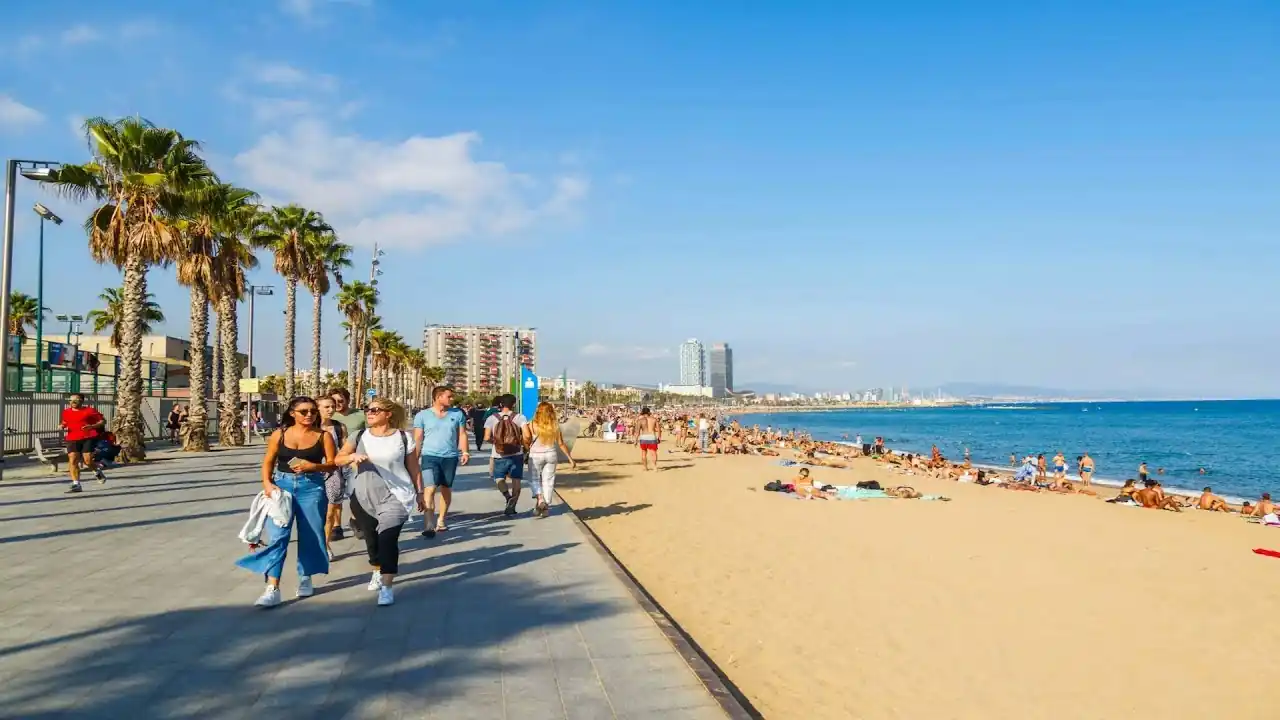
Keep walking toward Pg. Marítim de la Barceloneta and you’ll hit the famous Barceloneta beach. It’s not the most secluded stretch of sand, but the energy is part of the appeal — volleyball games, live musicians, cold beers sold from coolers, and tourists trying to pronounce “horchata” correctly.
Honestly, it’s a nice contrast after the calmer pace of El Moll de la Fusta. If you get too hot, just jump in the sea.
✔️ La Rambla & Boqueria Market
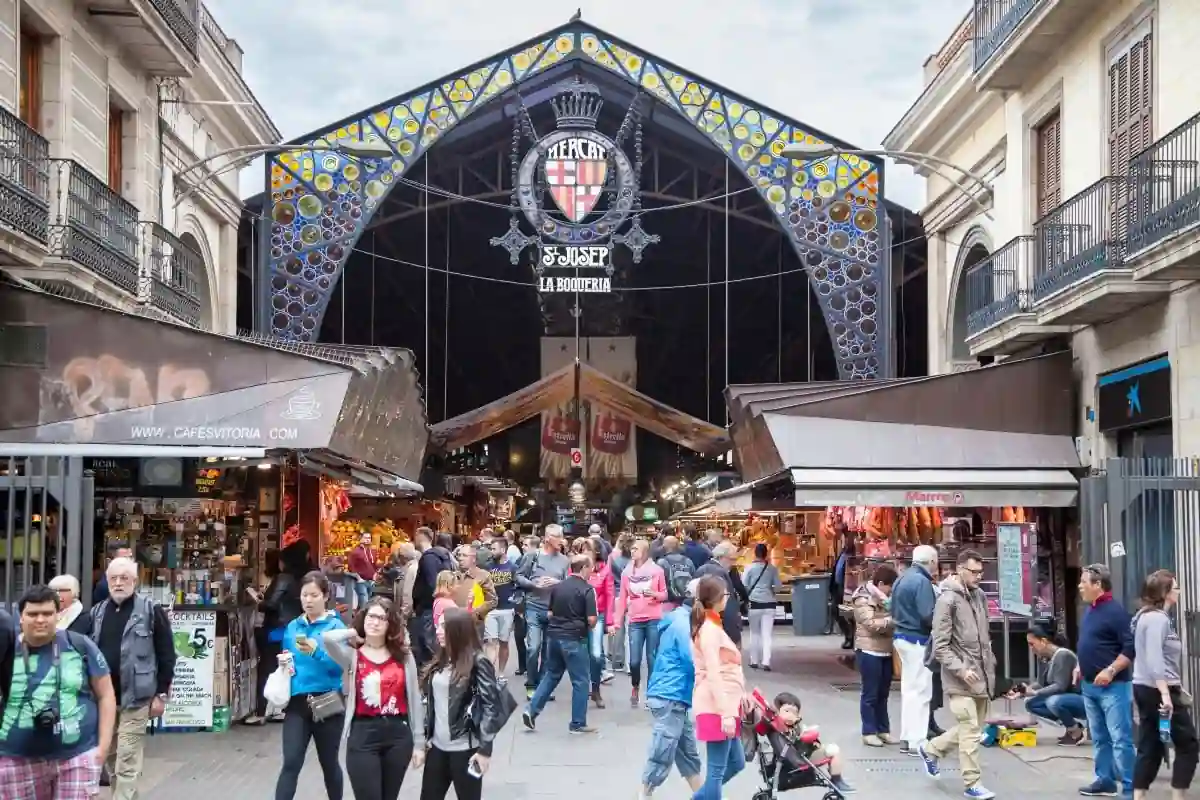
If you head the other direction, you’ll find yourself walking up La Rambla. Some travelers skip it because it feels too touristy, but still… there’s a reason it’s iconic. Street performers, flower stalls, human statues, and endless people-watching.
Right off Carrer la Rambla, the Boqueria Market is chaotic, colorful, and worth a wander. Grab a juice or a jamón bocadillo and keep moving. Or, take a breather in one of the shaded corners — it gets intense in the middle of the day.
These attractions form a triangle of sorts — Gothic charm, beachy chill, and busy urban life — all circling back to the calm strip of Moll de la Bosch i Alsina.
📸 Most Instagrammable Spots at Moll de la Fusta
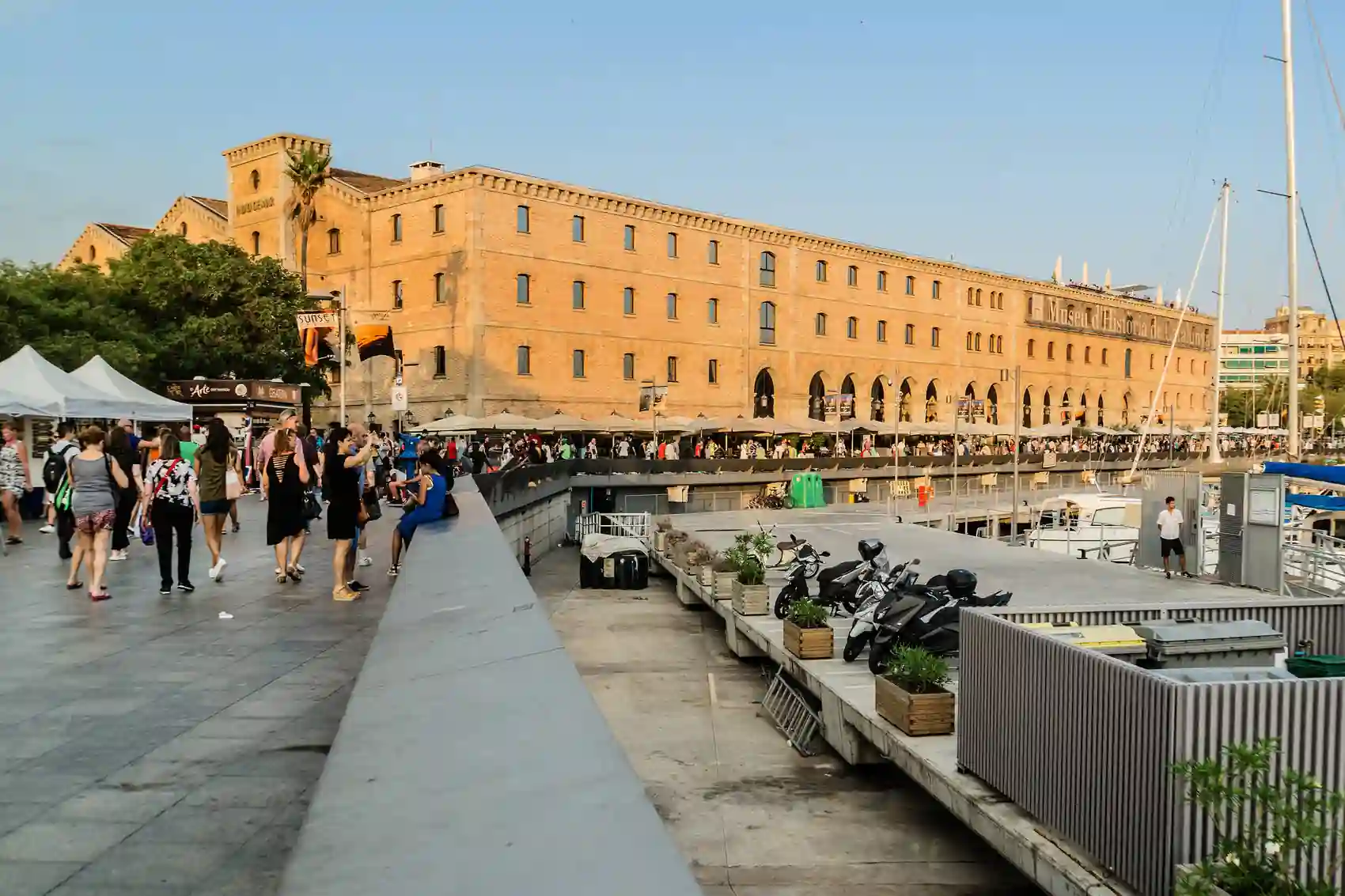
There’s no shortage of good angles along this stretch, especially if you’ve got a decent phone camera and a little patience.
✔️ Golden Hour Lighting & Water Views
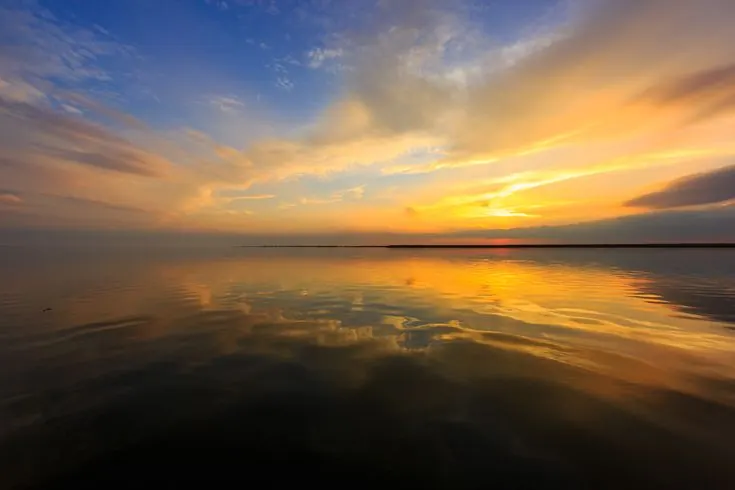
The harbor here practically glows in the late afternoon. You’ll get golden reflections bouncing off the water, silhouettes of Joan Salvat-Papasseit sculptures, and anchored yachts lining up like a postcard.
Best time to shoot? Just before sunset, facing the Port of Barcelona or out toward Moll d’Espanya. The symmetry of the boats against the light is surprisingly cinematic.
✔️ Urban Backdrops
Not every shot needs palm trees. Some of the best photo backdrops here are a little unexpected:
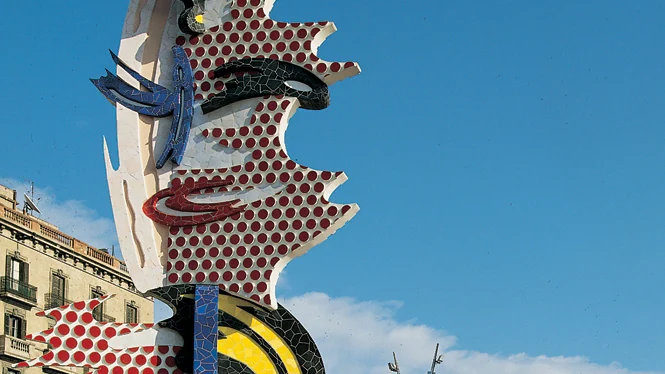
- The massive Barcelona Face sculpture (Escultura Al Moll De La Fusta) — Lichtenstein’s playful tribute to the city
- Reflective glass and angular shapes along Moll de la Marina
- Colorful benches and public art installations you might not notice until you almost trip over them
Even the Fukuoka Hakatanomori Stadium-style seating near some of the walkways gives off a bit of sporty-meets-seaside energy, if you’re going for that look.
And if you catch a Barcelona Sailing Day tour drifting past in the background? All the better.
💡 Travel Tips for Visiting this Tourist Attraction
This stretch of Barcelona’s coastline is easygoing… but that doesn’t mean you shouldn’t come prepared. A few small choices can make the difference between a peaceful walk and a sweaty, sunburned ordeal.
When to Go
Mornings are serene here, especially around sunrise when the light spills across the Passeig de Colom and the Port Vell is just waking up. It’s also when you’ll get the best shots of El Cap de Barcelona or the calm, still water reflecting the masts of anchored boats.
Evenings are livelier — especially in December, during Moll de la Fusta Nadal, when lights and festive markets pop up. That Christmas market buzz, with little wooden stalls and the smell of roasted nuts? Kinda magical.
Midday? Meh. It’s hot, shade is limited, and crowds thicken, especially near the Rambla de Mar bridge and Aquàrium Barcelona.
What to Bring
You’re not exactly trekking up Montjuïc, but a few essentials go a long way:
- Sunscreen (you’ll regret skipping it)
- A reusable water bottle — there are fountains nearby, or grab a bottle from kiosks around Moll de la Fusty (yep, it gets misspelled often)
- Light jacket if you’re out past sunset
- Camera or phone with decent storage (you’ll fill it)
- Comfortable shoes… not just for the Moll de la Fusta, but in case you end up meandering through El Born or all the way to Arenas de Barcelona
Oh, and a little cash. A few of the snack stalls or random street musicians still operate analog-style.
Safety & Accessibility
This area is pretty safe. It’s well-lit, and the promenade paths are flat and wheelchair-accessible, including the newer additions by BSM Car Park. That said, like anywhere around Las Ramblas, keep a close eye on your stuff — especially near crowded areas or while distracted by a photo op.
If you’re traveling with a pet, many nearby accommodations offer pet-friendly rooms (check places near Passeig Marítim de la Barceloneta), and the promenade itself is dog-friendly as long as you clean up and keep them leashed.
One last thing… tickets aren’t needed to stroll here, obviously, but some Moll de la Fusta tickets pop up around event time — especially if you’re attending something like Saló Nàutic Internacional de Barcelona or a seasonal food market.
📝 Conclusion
Sometimes the best travel moments aren’t about rushing from attraction to attraction… they’re just quiet pauses. Sitting on a bench. Watching the sun set over the Port of Barcelona. Letting your day wander like the breeze coming in from the marina.
Moll de la Fusta captures that energy. It’s not the flashiest spot in the city — not like Casa Batlló or Barcelona Olímpica. But that’s kind of the point. It’s slow, spacious, and full of little surprises… like the Escultura al Moll De La Fusta, or the view of Barceloneta beach when you walk far enough down the Pg. Marítim de la Barceloneta.
You’ll stumble on everything from families biking the promenade to street musicians playing near the Joan Salvat-Papasseit statue. There are food trucks one day, and maybe a pop-up art fair the next. In winter, Moll de la Fusta Navidad brings twinkly lights, festive cheer, and maybe a cup of mulled wine if you’re lucky.
So… don’t overplan it. Just go. Let it unfold at its own pace.
Have you explored Moll de la Fusta? Tag your favorite photo spots, hidden finds, or gelato recommendations in the comments — or better yet, bring a friend and explore it again.
💬 Frequently Asked Questions
1. Is Moll de la Fusta good for families with kids?
Yep, totally. It’s stroller-friendly and flat, and kids love running around near the marina or spotting boats.
2. Can I take my dog there?
Yes! As long as they’re leashed and you clean up after them, you’re all good. Some nearby restaurants also allow dogs on their terraces.
3. Are there any restaurants directly at Moll de la Fusta?
Not on the promenade itself, but plenty nearby — like Gambrinus Restaurant and seafood spots in La Barceloneta. Plus, some churro stands pop up closer to the holidays.
4. What’s the closest metro to Moll de la Fusta?
Drassanes on L3 and Barceloneta on L4 are your best bets. From there, it’s just a few minutes’ walk.
5. What’s special about the sculpture there?
El Cap de Barcelona by Roy Lichtenstein is this colorful, surreal face that looks like a comic book exploded by the waterfront. It’s weird in the best way.
6. Is there parking nearby?
Yes — BSM Moll de la Fusta Car Park is right across from the promenade. Convenient if you’re driving in.
7. When is the best time to visit Moll de la Fusta?
Golden hour. Either early morning for peace and light… or sunset when everything turns gold and peachy.
8. Are there any events held at Moll de la Fusta?
Definitely. You’ll sometimes find markets, music performances, or special events like the Barcelona Classic Gala or nautical shows linked to the Barcelona Sailing Experience.
9. What else can I see nearby?
Tons. The Maritime Museum of Barcelona, Carrer la Rambla, Port Olímpic, even the Hash Marihuana & Hemp Museum Barcelona if you’re into quirky stops.
10. Do I need tickets to walk along Moll de la Fusta?
Nope, it’s totally free. But for things like boat tours or nearby museums, you might need to look up Moll de la Fusta tickets ahead of time.
Recent Posts
 20 Surreal Places in Mexico That Feel Too Dreamy to Be Real (2025)
20 Surreal Places in Mexico That Feel Too Dreamy to Be Real (2025) What Makes Santiago Ways the Most Trusted Camino Agency?
What Makes Santiago Ways the Most Trusted Camino Agency? What Makes Orbis Ways the Go-To Choice for Outdoor Travel Enthusiasts?
What Makes Orbis Ways the Go-To Choice for Outdoor Travel Enthusiasts? Holiday Party Planning 101: Why Transportation Should Be at the Top of Your List
Holiday Party Planning 101: Why Transportation Should Be at the Top of Your List A Complete Guide to Veneajelu – Types, Routes, Prices, & More
A Complete Guide to Veneajelu – Types, Routes, Prices, & More

